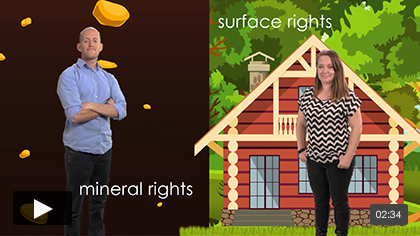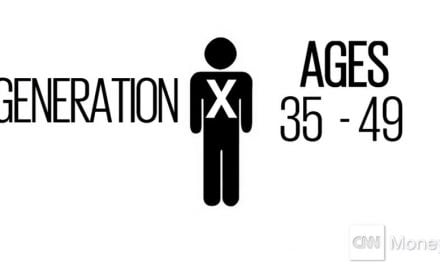The Great Recession ended nearly five years ago, and the California real estate market is still recovering. Secular stagnation has led to long-term frustration. What’s to be done?
The giant pool of money
Repeat it with us: Real estate is local. It’s a mantra we stand by. But the increasingly globalized economy hasn’t simply passed California’s real estate market by. Like it or not, California real estate prices are now connected to the price of tea in China (or however that cliche goes).
It’s a crucial lesson to digest in these quiet, contemplative years since the financial crisis. The global “giant pool of money” was the primordial soup out of which our current economic troubles evolved.
Up close, it’s all extraordinarily complex — the kind of stuff the big banks hire economic wonks for. But step back, and the whole thing comes into sharp focus: the giant pool of money is all the savings in the world. That is, all the money not currently being spent on consumer goods, operating costs or exchange in general.
This may seem counterintuitive to the average consumer. For many in the debtor class, “savings” is just a low-yield (no-yield, really) savings account at your bank — tantamount to a second checking account, or the underside of a mattress. But even putting cash under the mattress is an investment (just a poor one).
Around 2000, the giant pool of money went from around $35 trillion to about $70 trillion. This was due largely to booms which occurred in South East Asia, China and parts of the Arab world.
The Federal Reserve Chairman at the time, Alan Greenspan, had recently lowered interest rates in the wake of the dot com recession. Thus, bond yields were close to what they are today. Professional money managers went on the lookout for high-yield, low-risk investments (to sate their their rentier clients’ unearned income requirements). Wall Street provided those investments in the form of mortgage-backed bonds (MBB), and the rest is history.
Once again, the giant pool of money is focused on U.S. real estate. This time it’s working at a lower amplitude. Thanks to the credit crunch spawned by the 2008 financial crisis the bets are smaller scale, but no more sustainable. In other words, the bubble machine wheels on.
A modest proposal
So, what is to be done? It’s a big question, and requires a big answer: either we restructure society to eliminate gross income disparity and build a new middle class capable of self-directed savings, investment and mid-tier homeownership OR we mince up the lenders and feed them to Congress. Alas, we are a civil society…
We see two options for regrowing the middle-income, mid-tier homebuyer base.
One: the economy needs more inflation. Without waxing too wonkish, this has to do with introducing more flexibility into real wages. As inflation takes off, employers are able to “raise” nominal wages and/or hire more workers, thereby increasing aggregate demand.
And two: push the government to directly create jobs (government jobs and contracts) and provide more subsidies for education. Enough of the bootstrap nonsense — the U.S. government has the means and the authority to spur a virtuous economic cycle via aggressive stimulus. Instead it is stuck in a feedback loop of austerity and so-called “compromise.”
The Great Recession and the two recessions that preceded all produced “jobless recoveries.” That is, a recovery in overall gross domestic product (the main metric for measuring a recession) occurred as a result of increased productivity, without an associated increase in jobs.
Well it doesn’t take a Princeton-educated economist to see that increased productivity alone does not lead to more people buying homes. Homebuying is spurred by an increase in jobs and/or wages, not just productivity. This is why the national and state homeownership rates are down, even though the recession ended in 2009, GDP has been increasing (though modestly), corporate profits are on the rise and the stock market is soaring.
Congress and corporate moguls don’t notice, or don’t care about this phenomenon – they both benefit from the increased productivity of the labor force. Closer to home, speculators mask the problem in the real estate market by inflating home prices with their cash deals and providing a huge supplement to a market otherwise bereft of real estate market activity.
The cancer has remained undetected thus far thanks to the Fed keeping interest rates at zero. The zero lower bound has created conditions sufficient for keeping productivity high and the cost of funds (i.e. capital) very, very low. The business community and our government leaders are in for a shock once interest rates rise.
Interest rate shocks and wounded demand
This brings us back to the giant pool of money. Right now, as interest rates are still low, and U.S. government bonds are producing little to no returns, huge investments have returned to real estate and the stock market. Leaving present chatter about a stock bubble aside, any California real estate pro can see we are in the midst of a mini pricing bubble as well, despite some misguided attempts to say otherwise.
This time, though, the giant pool of money has been funneled into direct asset purchases, rather than mortgage-backed bonds. MBB yields are still low, mostly since demand for mortgages has remained sour since 2008. Thus, institutional investors and fly-by-nighters alike have purchased physical assets instead of speculating on the secondary mortgage market.
All this places a floor on the current market speculation. Unlike the numbers game that was happening during the Millennium Boom, today’s investor is at least protected by the minimum replacement cost of whatever property they have purchased — theoretically.
However, and this is big, all the current market speculation depends on the eventual resurrection of end-user demand. According to the new economic paradigm, the required demand cannot be supplemented by more consumer debt leveraging, especially with mortgages now heavily regulated by Dodd-Frank Wall Street Reform and Consumer Protection Act and the Consumer Financial Protection Bureau (CFPB). Thus inflation must rise in order to spur job creation and a broadening of middle-income, mid-tier homebuyers.
This is a very tough spot indeed; it is what economist Larry Summers has best described as secular stagnation. This was the topic of our last economics update, and it’s a term that is going to crop up again and again. It means the current pattern described above — slow and steady economic recovery driven by productivity rather than job and income growth. It’s a vicious cycle – and one that will continue for perpetuity unless something is done to shock the system out of its regressive growth pattern.
Our economy is like a shark: it has to constantly move forward or it dies. Right now, despite some illusions of growth, we are treading water. According to our forecasts, jobs and the real estate market will fully recover around 2025. Without significant progress towards more robust employment and wage growth, expect to be frustrated the whole way.




















Hmmm…
I believe that government stimulus is merely adding to a future tax burden. However, there is a way to create the same stimulus via a planned change in the tax structure, and also assist in resurrecting the middle class.
First and foremost, taxes must be collected from all parties. In other words, corporations. While the “corporate tax burden” is supposed to be high, in actuality it is not–at least, it is not for the Googles and Apples and General Electrics of the world. The “upper class” (whatever that is) does pay the lion’s share of income taxes, but the taxes that the middle class pays affect it far more, since they are a greater share of the typical middle class person’s income.
However, a major part of the problem is that we have become a society of “haves” and “have nots,” and this is driven in part by something we all love–imports. When a poorer country exports to us, that country is by definition at an advantage, and the multinational corporation that uses the labor in a poorer country has a huge advantage in the marketplace. That’s why everyone does it.
Unfortunately for us in the middle class, that very set of events creates a chain reaction–US made goods are too expensive, and our manufacturing disappears, and then the poorer country becomes affluent enough to control pricing somewhat, and the US / global corporations that use production facilities outside the US raise prices because they can, but at the same time the workers here have lost their purchasing power because the good jobs are gone. Hence some construction jobs are at the same dollar level as 20+ years ago, but inflation and higher personal taxes (including FICA, Medicare, and now Obamacare) have reduced buying power quite dramatically.
The only way out of this is for some of the corporations in our country to become better US citizens, and for the government to enact policies that actually favor the middle class.
I personally do not believe that “more inflation” will help, nor do I believe that the federal government adding stimulus will help (which ultimately amounts to the same thing as adding inflation). It seems to me that we need to move back into a society where middle and lower class Americans (whoever lives here) are the “protected class,” and the rapacious behavior of governments, corporations, and other large entities is proscribed.
The latest recession, for example, is almost wholly the fault of government, although the government has been quite successful at pointing the finger elsewhere. For example, when the recession started, the federal government could have refused to bail out the corporations unless there was a quid pro quo–all the mortgages in the US reduced to the market price of the properties they used as collateral, and all the interest rates fixed at current market levels. That act alone would have stopped the housing recession dead in its tracks.
The problem is that the middle class has no lobbyists. So no actions were ever taken that truly benefited the middle class. From my position as a 30 year real estate professional, I saw the depredations of the banks, etc. firsthand. It was not pretty. Similarly, the government owes all its citizens an economy that is created for them, not just for the government itself and for the protected classes (think quasi-government entities, unions, corporations, wealthy folks). The answer does not completely lie in collecting more taxes, nor completely in “creating more jobs.” The answer lies in an intentional shift–re-make our society so that the US is once again truly the land of opportunity for anyone who lives here. That will include some major readjustment in both government and corporations, and some realistic evaluation of costs.
For example, I paid cash for the birth of my fourth child–it was about $1500, plus several hundred for the OB-gyn. Nobody can do that today, because the bill is too high. All of us must have insurance. When I was still on private health insurance (I’m now on Medicare), the final years I paid about $15,000 per year for that insurance. That was a “group rate” and so it was less for the insurance I obtained than if I had purchased it individually. It was also the HMO rate, which was cheaper than a PPO. REALLY?? Why?
So the costs of living are too high to survive in the middle class today, rent or buy. THAT is the problem that must be solved, and it can be.
Stirring up the econony as out lined in option 2 I believe is foolish… creating mass job increases in government jobs will only put off and despair real recovery because of the massive government debt job creation needs to come from private sector. Taxes will increase to cover jobs and take away from savings and middle class growth.